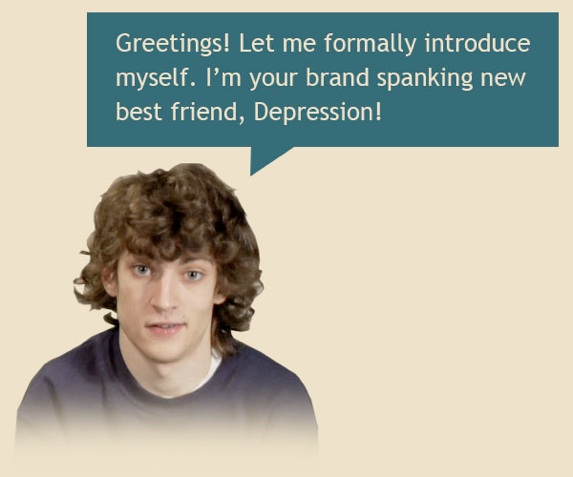Latest Public Service Radio Minute
Anxiety From Political News and Social MediaAnxiety From Political News and Social Media, MP3, 2.4MB
Listen to or download all our PSAsSupport Our Work
Please donate so we can continue our work to reduce the stigma of psychiatric illness, encourage research, and support educational activities for behavioral health professionals and the public. Ways you can donate and help are on our Support and Donations page. Thank you!
More InfoLatest News Around the Web
Increasing Green Space Around Schools May Lower Odds Kids Will Exhibit AD/HD Symptoms, Research Suggests
Psychiatric News (12/19) reports, “Increasing the amount of green space around schools may lower the odds that children will exhibit attention-deficit/hyperactivity disorder” (AD/HD) symptoms, researchers concluded in a 59,754-child study. The findings were published online Dec. 18 in JAMA Network Open.
Related Links:
— “More Green Space Around Schools May Reduce ADHD Symptoms, Study Finds, Psychiatric News, December 19, 2019
Researchers Say Higher Dietary Glycemic Index Is Tied To Insomnia
Reuters (12/19, Rapaport) reports women with higher dietary glycemic index scores were more likely to have insomnia, according to a study published in the American Journal of Clinical Nutrition. The researchers examined “food diaries for more than 50,000 women in their mid-60s who had already gone through menopause” and found that “women with the highest dietary glycemic index scores – meaning they consumed more refined carbohydrates like white bread, sweets and sugary soda – were 11% more likely than women with the lowest scores to report insomnia at the start of the study period.” In addition, “they were also 16% more likely to develop new insomnia during the three-year follow-up period.”
Related Links:
— “Sugar and white bread tied to older women’s insomnia, “Lisa Rapaport, Reuters Health, December 19, 2019
FDA To Add Warnings To Gabapentin And Pregabalin About Risk Of Breathing Problems When Combined With Opioids And Certain Other Drugs
The AP (12/19, Perrone) reports the FDA announced that gabapentin and pregabalin “can cause dangerous breathing problems when combined with opioids and certain other drugs.” The agency will “add new warnings to packaging for” the drugs, which “are among the most prescribed in the U.S.”
HealthDay (12/19) reports that “the new warnings” are “based on a review of data from numerous sources, including case reports, observational studies, human trials and animal studies.” While the two gabapentinoids are approved by the FDA for “epilepsy, postherpetic neuralgia (pain following shingles), neuropathic pain associated with diabetic neuropathy, fibromyalgia, generalized anxiety disorder and restless legs syndrome,” they are also commonly prescribed off-label for “insomnia, migraine, social phobia, panic disorder, mania, bipolar disorder and alcohol withdrawal.”
Medscape (12/19, Brooks, Subscription Publication) reports Dr. Douglas Throckmorton, an FDA official, said, “Reports of gabapentinoid abuse alone, and with opioids, have emerged and there are serious consequences of this co-use, including respiratory depression and increased risk of opioid overdose death.”
MedPage Today (12/19, George) also covers the story.
Related Links:
— “FDA warns of breathing risks with popular nerve drugs, “Matthew Perrone, AP, December 19, 2019
Despite Apparent Benefits Of Buprenorphine For Opioid Addiction, Field Still Divided On Its Use In Recovery
The AP (12/18, Johnson) discusses the effectiveness of buprenorphine as a treatment for opioid addiction and withdrawal, and its surprising lack of availability at addiction treatment centers across the country. As an example “in Missouri, some treatment programs had shunned buprenorphine, particularly long-term, in favor of abstinence-based counseling and support groups.” Also, “some believed medications were a crutch that prevented true recovery.” However, “in 2017, with overdose deaths rising, Missouri tied federal grant money to a medication-first philosophy.” As such, “programs would get money only if they started clients on meds rapidly and if they dropped rules about medication time limits and attending counseling.” As a result, “medication treatment increased and more patients stayed in treatment longer.” Despite these results and others, the addiction treatment field is still divided on the benefits of its use as a sustainable recovery method.
Related Links:
— “Walk-in clinics for opioid addiction offer meds first, fast, “Carla K. Johnson, AP, December 18, 2019
Children’s Benzodiazepine Abuse, Misuse May Lead To Increased Overdose And Fatality Rates, Researchers Say
MD Magazine (12/18, Walter) reports that benzodiazepines, a class of medication used to treat anxiety, “may be misused and abused by children, leading to increased overdose and fatality rates,” researchers concluded after identifying and analyzing “national trends for pediatric benzodiazepine exposures between 2000-2015 after gathering data from 296,838 pediatric patients,” then procuring “data of benzodiazepine exposures in adolescences under the age of 18 who reported to participating US poison centers.” The findings were online Oct. 15 in the journal Clinical Toxicology.
Related Links:
— “Benzodiazepine Overdose Rates Increasing in Teens, “Kenny Walter, MD Magazine, December 18, 2019
Foundation News
Nothing Found
It seems we can’t find what you’re looking for. Perhaps searching can help.

